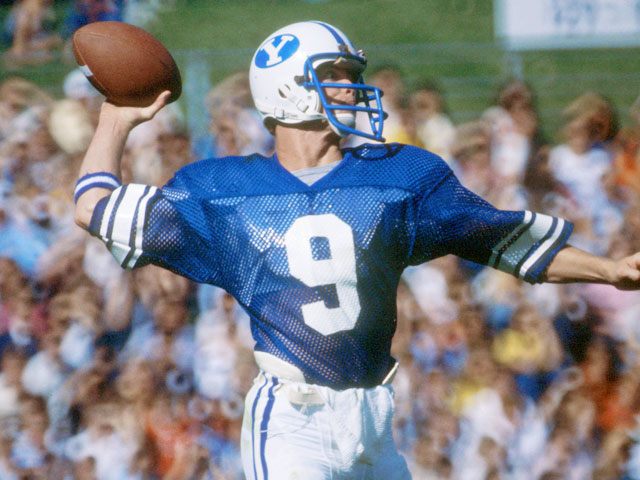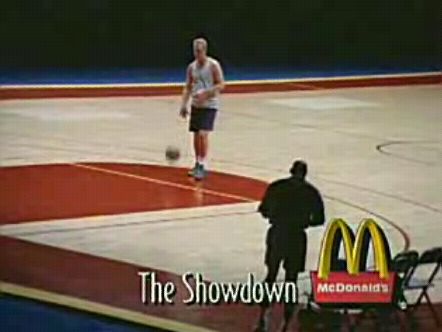
Time is a bit cramped this week with Thanksgiving upon us, so I’ll be tackling one mailbag question below this week. Also, I need to wallow a bit in my misery about Derrick Rose being out for the rest of season with a torn meniscus in his right knee after having just been out for 18 months for a torn ACL in his left knee. If you were following my Twitter feed on Friday night when the injury occurred, you probably were hoping that I didn’t have access to any sharp metal objects – it was a dark, dark evening. As a 35-year old Chicago sports and Illini fan, I’ve seen more than my fair share of debilitating sports moments, but nothing has been as bad as these back-to-back Derrick Rose injuries. I had dreamed of the Bulls somehow landing D-Rose in the draft back when he was still not even halfway done with his high school career at Simeon and the night that the franchise won the 2008 NBA lottery with a 1.7% chance was the greatest off-the-field sports moment that I had ever witnessed (if that makes sense). By the end of his rookie season, he had quickly vaulted to one of my 5 favorite athletes of all-time (the others being Michael Jordan, Walter Payton, Frank Thomas and Illini era Deron Williams). So, this has been an excruciating process to witness and there’s a palpable feeling here that Rose may end up on the list of “What might have been?” athletic enigmas such as Gale Sayers, Bill Walton and Bo Jackson. From an overall Bulls team perspective, the franchise is now in the “basketball hell” danger zone where they’re not good enough to win a championship yet not bad enough (even with Rose being out and presumably trading Luol Deng and his expiring contract) to realistically tank to get a legit shot at a top 5 lottery pick in next summer’s loaded draft. (Granted, I’ll keep praying for the sports gods to throw us the bone of Rose’s fellow Simeon alum Jabari Parker ending up in a Bulls uniform.) In summary, thank goodness for the Blackhawks!
Now for our mini-mailbag question for the week (with a full-blown mailbag coming after Thanksgiving):
Yes, I believe that it’s inevitable for the playoff system to go to 8 just as it was only a matter of time that we went from 2 teams playing for the championship to a 4-team playoff. I would never have said that 2 years ago, but the tea leaves are there for further playoff expansion. Now, as I had intimated in playoff system proposals posts previously (such as this one about a hypothetical 4-team playoff system 3 years ago that actually turned out to be fairly close to what the CFP will look like), the critical question is, “Does this make sense for the Big Ten and SEC?” Anyone can slap together a playoff system that he or she personally would like to see, but the challenge is always about whether the power conferences would ever agree to it.
In this case, there’s a fairly heavy incentive for the power conferences to eventually expand the playoff to 8 teams if they can do the following: all 5 power conference champs would receive an auto-bid. That provides a host of benefits for the power conferences compared to the 4-team system, such as (a) a guaranteed playoff slot annually and all of the money that comes with that, (b) guaranteeing that their respective conference championship games become de facto annual playoff games under their complete control and all of the money that comes with that and (c) making each divisional race within each of those power conferences have national title implications in a way that would increase the competitive and media value of the regular season and all of the money that comes with that.*
(* Yes, I know that the Big 12 can’t take advantage of (b) and (c) as of now. We’ll see how long that lasts, as noted in my last post.)
Going one step further, there’s also an easy and logical framework to get that in place by using the bowls and their traditional bowl tie-ins:
Rose Bowl: Big Ten champ vs. Pac-12 champ
Sugar Bowl: SEC champ vs. at-large
Orange/Peach Bowl: ACC champ vs. at-large
Fiesta/Cotton Bowl: Big 12 champ vs. at-large
If that looks familiar, it’s because I proposed that system in one of the earliest posts on this blog over 7 years ago. The irony is that this playoff system could expand the number of participants to 8 yet the bowls would actually revert back to their traditional roots more compared to the current 4-team system (i.e. there is truly a traditional Rose Bowl every year no matter what). In essence, it’s both progressive and traditionalist. Just imagine what a TV network would pay for those 4 games split up on New Years Eve and New Years Day, 2 semifinal games a week or two later, and then the national championship game on the open Sunday between the NFL’s conference championship games and the Super Bowl.* The Big Ten, Pac-12, SEC and Big 12 are all already receiving $40 million per year for their top non-playoff bowl contracts above and beyond what they’re receiving for the 4-team playoff, so there really isn’t any cap for how high those rights fees can go if those games are converted to single elimination playoff games. That’s going to be really difficult to resist.
(* Yes, these games are getting played in January as opposed to the common fan request of playoff games during December. Note that December TV ratings are materially lower than January TV ratings, the bowls are a contractual mechanism that allow the power conferences to maintain control over the postseason, and the platitudes that university presidents, conference commissioners and athletic directors have given about the length of the football season are mind-bogglingly disingenuous considering how much they have all whored themselves for the almighty dollar in almost every other conceivable way. Drawing a line in the sand about 2 or 4 teams at the most playing beyond New Years Day is completely arbitrary, especially considering that the other revenue sport of men’s basketball has a season that runs from Midnight Madness in October to the national championship game in April.)
Access for the non-power conferences would likely be a hot topic, although I’d have a hard time seeing the power conferences automatically giving them a national championship playoff slot every year.* There might be some type of provision similar what is with the current BCS system, where a top 12 non-AQ champ or top 16 non-AQ champ that ranks higher than an AQ champ would get a bid.
(* Yes, I know that’s not necessarily fair when the power conferences automatically get their own slots while the non-power conferences don’t receive automatic access. Like I’ve said, what matters in reality is what the Big Ten and SEC would agree to.)
I also have a difficult time seeing a playoff ever going beyond 8 teams (and an NCAA Tournament-style system that provides an auto-bid for every conference would be a non-starter for the powers that be), so any traditionalist arguments about further “bracket creep” are tougher to take seriously at that level. The power conferences can get favored access status for their conference champs and preserve or even enhance the financial values of their respective regular seasons, conference championship games and bowl tie-ins under an 8-team system that wouldn’t be possible in a 16-team scenario. The facts that (a) the 8-team playoff that I described above is such low hanging fruit financially with relatively little disruption to the current setup and (b) there will inevitably be controversies arising from who gets in and who gets shut out of the 4-team playoff are going to be driving forces behind an eventual expansion of the playoff system. The powers that be can state all that they want that the current CFP deal will go the full 12 years, but there will surely be an assessment in a few years about what an 8-team playoff would be worth in the marketplace that will open their eyes to change once again.
We’ll get to some other mailbag questions about the state of college sports and conference realignment soon. Until then, Happy Thanksgiving!
(Image from Wikipedia)








